We spend millions of pounds each year on resurfacing and surface dressing the county’s roads, ranging from unclassified rural roads to town centre roads to main ‘A’ roads.
What is resurfacing and surface dressing?
Resurfacing is the placement of a new asphalt layer which is applied by a paving machine and then rolled to achieve a smooth, strong surface.
Surface dressing is the application of bitumen and then chippings onto the existing road surface.
Why do we surface dress roads?
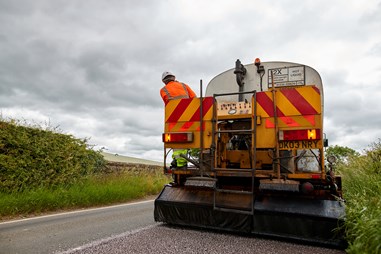 Surface dressing offers many advantages:
Surface dressing offers many advantages:
- It seals the road surface which prevents water getting into the underlying road structure
- It slows the deterioration of the road surface and underlying road structure
- It restores skid resistance to the road surface
- It helps to reduce spray caused by vehicles travelling on wet road surfaces
- The rapid speed of the process means that disruption to road users, local businesses and emergency services is minimised
- It can extend the life of the road considerably, maximising the cost-effectiveness of limited highway maintenance funds
Surface dressing is a preventative maintenance treatment that is best used before the road deteriorates significantly. It may look like we're spending money on perfectly adequate roads while there are roads in a poor condition, but we're doing these treatments to keep the roads in a good condition for much longer.
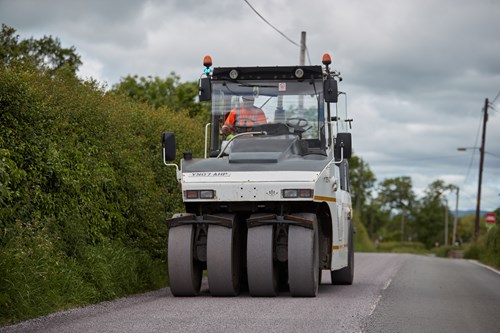 Surface dressing is a simple and highly cost-effective method of maintaining the road surface which can prevent much more expensive work being needed later, and it allows us to maintain a high-quality road network on a limited budget.
Surface dressing is a simple and highly cost-effective method of maintaining the road surface which can prevent much more expensive work being needed later, and it allows us to maintain a high-quality road network on a limited budget.
Surface dressing has to be planned in two stages. Firstly, the road is improved through patching and other minor repairs. Later, often the following year, the surface dressing is done.
How long does surface dressing last?
We would typically expect a surface dressing to last for ten years. On less busy roads surface dressing can last much longer.
Why do we resurface the roads?
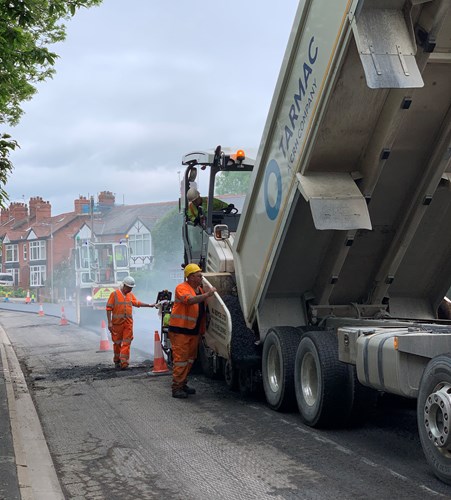 Resurfacing is a vital part of highways maintenance. It improves the long-term condition of roads, helps to prevent structural problems in the future, and means we don’t have to spend as much time on smaller repairs, eg filling in potholes.
Resurfacing is a vital part of highways maintenance. It improves the long-term condition of roads, helps to prevent structural problems in the future, and means we don’t have to spend as much time on smaller repairs, eg filling in potholes.
Resurfacing is necessary when it's neither economic or appropriate to intervene using a surface dressing treatment. This decision is made considering the treatment needed now with the likely future treatments. While costs are important, the whole-life impacts on disruption, the environment and the lifespan of the treatment are considered.
Typically, only the top 50mm of the road is maintained, either by removing material first before reinstating with a new layer, or overlaying the existing surface with the new layer. When the structure of the road is insufficient, we also need to replace the lower layers of the road, but this is seldom required.
How do we decide which roads to treat?
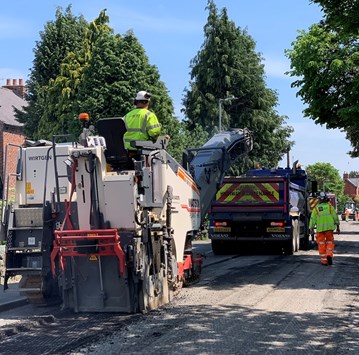 We gather and analyse information from:
We gather and analyse information from:
- Routine condition surveys – these surveys are commissioned from specialist survey contractors. The data provides a detailed and objective view of the condition of roads. Lengths of road are graded from grade 1 ‘Free from defects’ to grade 5 ‘Structurally impaired’
- Maintenance history – we consider the amount of reactive repairs needed in recent years as well as when the road was last treated. This information helps inform the likelihood of more rapid deterioration in the coming years
- Regular inspections – these can range from being weekly up to annually, depending on how busy the road is and how important it is locally and economically
- Reports from councillors, parish councils and community groups – we work closely with parish and town councils to listen to their thoughts on what's important locally
- Reports from residents – anyone can report a problem on the road
This data is used to assess the state of the entire network, around 5,150 km of road.
We use the data to find out the most cost-effective type of repair and form a resurfacing plan for a number of years ahead. To achieve value for money, we prioritise roads that are likely to need costly repairs in the future.
Once the prioritisation process has taken place, funding is allocated to the specified works to be carried out.
When do we resurface the roads?
We plan to carry out as much resurfacing as possible during the warmer months. Surface dressing is carried out between mid-April and late August as it can only be done in warm, dry weather.
A road closure is needed in most cases to help ensure the safety of road users and those carrying out the works. To minimise disruption to highway users these works can on occasion be carried out overnight and at weekends.
School holidays and local events are considered when work is planned and programmed.
How long will resurfaced roads last?
A new asphalt layer should last between ten and 20 years dependent on the volumes of traffic using the road.
Looking after the environment
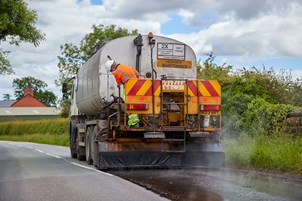 Maintaining roads at the right time minimises the amount of work needed, as well as the costs and the impact on the environment. Undertaking preventative maintenance before roads deteriorate is one of the best measures to reduce our impact on the environment.
Maintaining roads at the right time minimises the amount of work needed, as well as the costs and the impact on the environment. Undertaking preventative maintenance before roads deteriorate is one of the best measures to reduce our impact on the environment.
We recognise that many of our roads are beyond the point that preventative maintenance can be done, and for which larger scale maintenance is necessary.
We still consider how we can limit our impact on the environment. To this end, we:
- Undertake testing in advance of the maintenance to determine whether any waste material is hazardous. Non-hazardous arisings from road maintenance can be reused rather than sent to landfill
- Programme our maintenance well in advance allowing the contractor to optimise the work, including considering the the environmental impact and how this impact can be mitigated